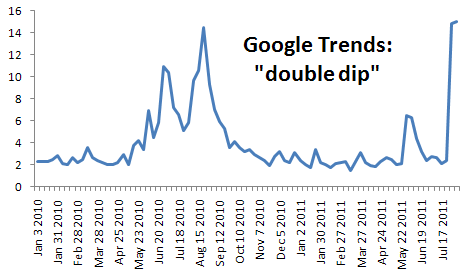To celebrate the debt ceiling deal, I updated my copy of Nathan Forrester’s model, A Dynamic Synthesis of Basic Macroeconomic Theory.
Now, to celebrate the bad economic news and increasing speculation of a double-dip depression replay, here are some reflections on policy, using that model.
The model combines a number of macro standards: the multiplier-accelerator, inventory adjustment, capital accumulation, the IS-LM model, aggregate supply/aggregate demand dynamics, the permanent income hypothesis and the Phillips curve.
Forrester experimented with the model to identify the effects of five policies intended to stabilize fluctuations: countercyclical government transfers and spending, graduated income taxes, and money supply growth or targets. He used simulations experiments and linear system analysis (frequency response and eigenvalue elasticity) to identify the contribution of policies to stability.
Interestingly, the countercyclical policies tend to destabilize the business cycle. However, they prove to be stabilizing for a long-term cycle associated with the multiplier-accelerator and involving capital stock and long-term expectations.
I got curious about the effect of these policies through a simulated recession like the one we’re now in. So, I started from equilibrium and created a recession by imposing a negative shock to final sales, which passes immediately into aggregate demand. Here’s what happens:
There’s a lot of fine detail, so you may want to head over to Vimeo to view in full screen HD.
This is part of a couple of experiments I’ve tried with screencasting models, as practice for creating some online Vensim training materials. My preliminary observation is that even a perfunctory exploration of a simple model is time consuming to create and places high demands on audience attention. It’s no wonder you never see any real data or math on the Discovery Channel. I’d be interested to hear of examples of this sort of thing done well.


Tom,
I’ve been experimenting with screen casting for about 9 months now and wen done well it’s marvelous though getting to well done is quite a task — at least for me. I’ve done a couple dozen and none of them have been acceptable to me. Sal Khan seems to be a master at this… http://www.khanacademy.com/ and one can see the way he has developed over the years. 2,400+ videos so far I think.
be well,
Gene